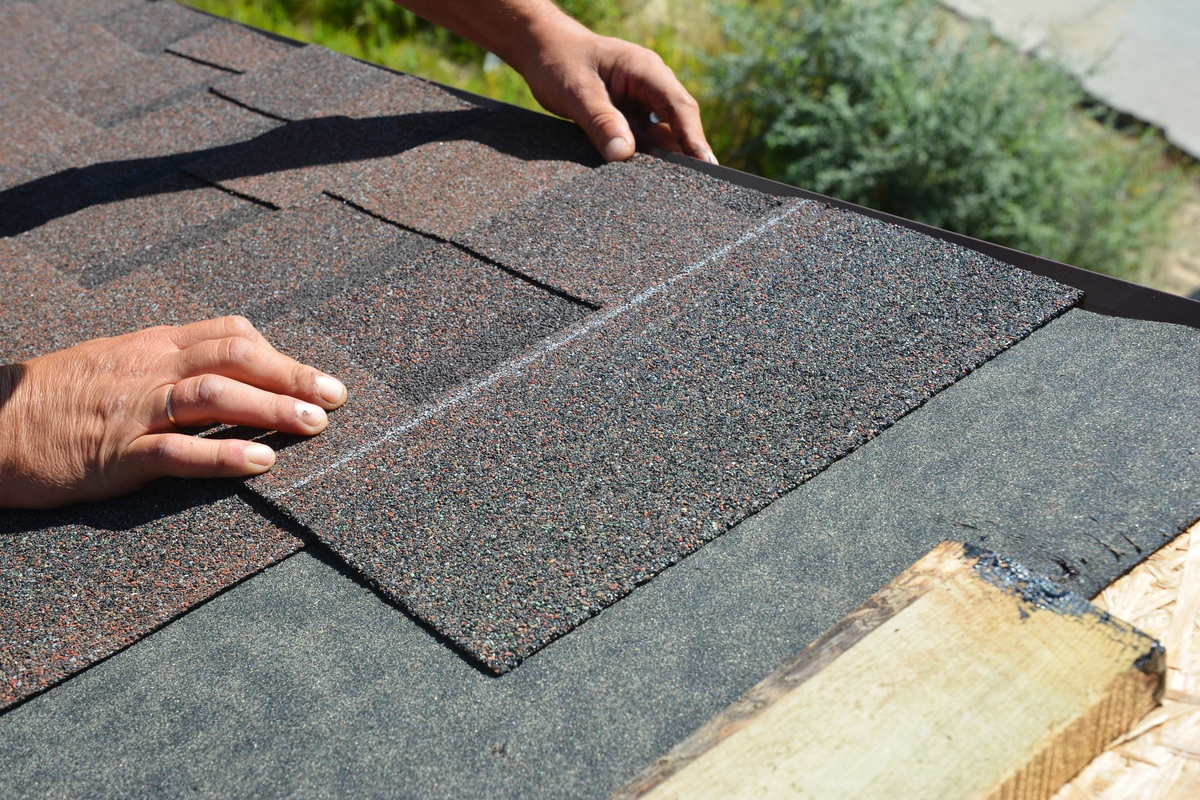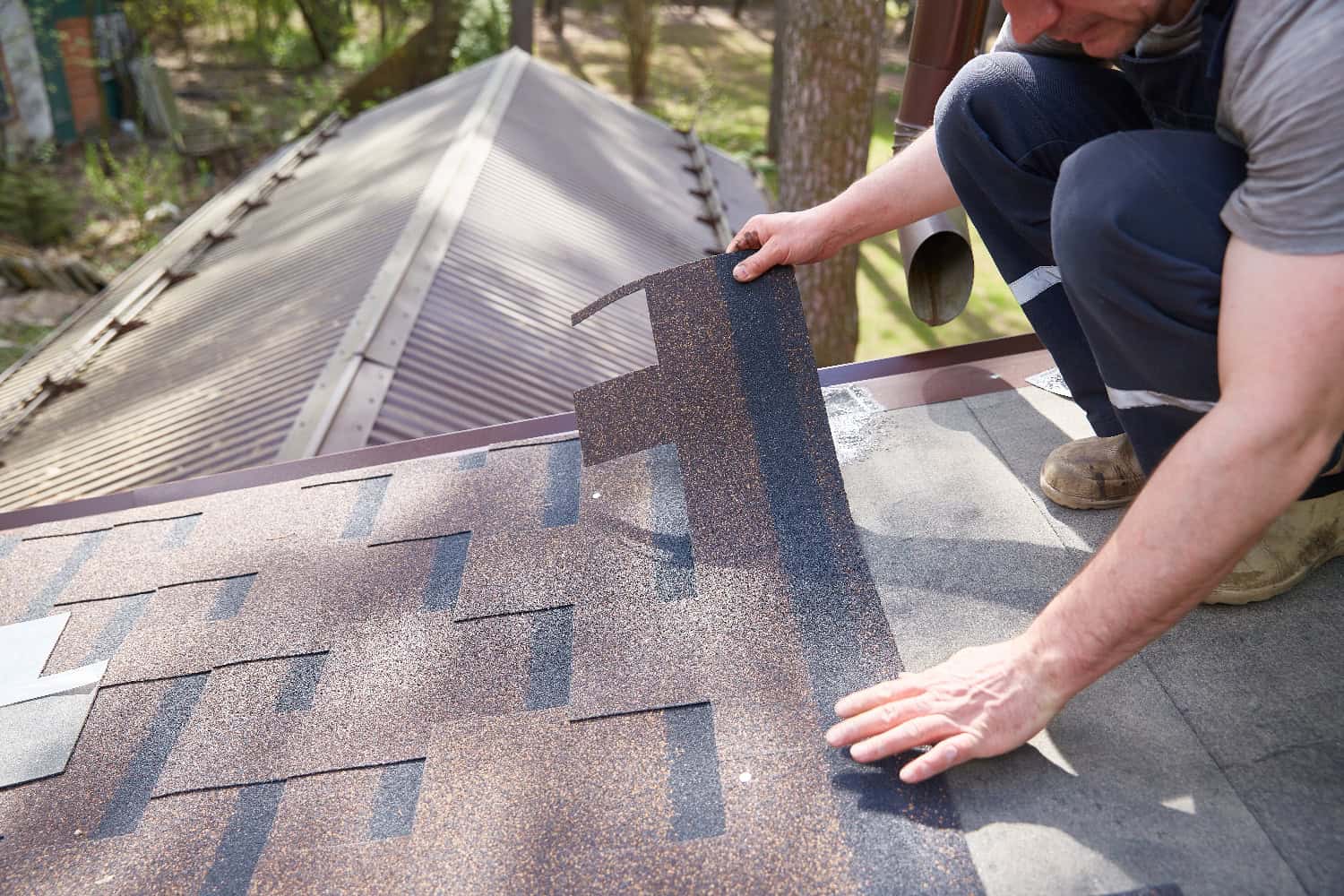A Comprehensive Guide to Recognizing Architectural Roofing Shingles and Their Benefits
Architectural tiles stand for a prominent option amongst home owners seeking a blend of style and capability (architectural shingles). These tiles differ noticeably from traditional alternatives, providing enhanced resilience and aesthetic appeal. Understanding their one-of-a-kind functions is vital for making informed decisions concerning roof covering. As home owners consider their options, the myriad benefits of building tiles could influence both the appearance and durability of their roofs. Just what establishes them apart, and exactly how can they improve a home's total value?
What Are Architectural Shingles?
Building roof shingles, usually concerned for their aesthetic charm and durability, are a preferred roof covering option amongst property owners. These shingles are manufactured using several layers of asphalt, offering them a thicker profile contrasted to traditional three-tab shingles. This style not only improves their aesthetic structure but additionally adds to their strength against rough weather conditions.Architectural roof shingles been available in a range of styles and colors, allowing house owners to personalize their roofing to match their personal preferences and home style. Their dimensional look commonly simulates the look of much more expensive roofing products, such as wood shakes or slate, without the linked costs.Additionally, building roof shingles commonly have a longer life expectancy than common alternatives, frequently lasting up to three decades or more with correct maintenance. This combination of long life, visual flexibility, and performance makes architectural shingles a preferred selection in domestic roof options.
Key Distinctions In Between Building and Three-Tab Shingles
While both architectural and three-tab roof shingles offer as popular roof covering materials, they differ substantially in design, durability, and efficiency. Building roof shingles, additionally understood as dimensional tiles, include a split style that produces a three-dimensional appearance. This not only enhances aesthetic allure but also gives boosted wind resistance contrasted to three-tab tiles, which have a flat, consistent shape.In regards to longevity, building tiles typically flaunt much longer lifespans, typically long lasting thirty years or more, whereas three-tab tiles usually last around twenty years. This distinction stems from the production procedure, as architectural shingles are made from thicker products and offer boosted protection against extreme weather condition conditions.Furthermore, setup can differ, with architectural shingles requiring extra accurate placement due to their weight and design. On the whole, these differences are necessary for property owners to consider when picking roof covering materials that ideal match their demands and preferences.
Benefits of Choosing Architectural Shingles
Picking building shingles provides house owners many advantages that expand beyond looks (architectural shingles). Among the key benefits is their enhanced sturdiness compared to typical three-tab shingles. Architectural tiles are usually made from higher-quality materials, permitting them to endure rough weather, including high winds and hefty rainfall. This resilience equates right into a longer life expectancy, often exceeding three decades, which can decrease substitute regularity and costs.Additionally, architectural roof shingles supply premium insulation, adding to far better power efficiency in homes. Their layered structure assists regulate interior temperature levels, possibly reducing home heating and cooling down expenses.Another advantage is their resistance to algae development, which assists keep the roofing system's appearance in time. Property owners also value the ease of setup, minimizing labor expenses and time on the project. In general, building shingles stand for a wise financial investment for home owners seeking both functional and durable roof options
Aesthetic Appeal and Layout Options
The visual appeal of architectural shingles greatly boosts the total look of a home. These tiles are designed to resemble the appearance of natural products, such as wood or slate, while offering an extra budget friendly option. Their dimensional account develops depth and aesthetic passion, setting them apart from typical three-tab tiles. Offered in a wide range of colors, appearances, and styles, building tiles can match diverse building designs, from contemporary to traditional.Homeowners can select shades that integrate with their outside paint or landscape design, ensuring a cohesive look. In addition, the multi-layered building and construction of these shingles permits distinct patterns and designs, making it easy to customize a home's outside. The adaptability of architectural tiles makes them appropriate for various climates and looks, attracting those looking for both performance and design in their roofing choices.
Sturdiness and Longevity of Architectural Roofing Shingles
The longevity and durability of architectural shingles are important variables for house owners taking into consideration roof covering alternatives. These tiles supply premium resistance to weather elements, commonly outlasting traditional roof materials. In addition, the high quality of installation plays a significant function in optimizing their life expectancy.
Resistance to Weather Condition Components
Building shingles provide an aesthetically pleasing roofing alternative, their real worth exists in their outstanding resistance to various weather elements. Made to hold up against rough problems, these shingles are usually made from high-grade products that boost their sturdiness. They are engineered to withstand wind uplift, with lots of products rated to endure winds of up to 130 miles per hour. Additionally, building shingles have a protective granule layer that assists shield against UV rays and stops algae development, guaranteeing durability and keeping look. Their thicker style also gives much better impact resistance, reducing the risk of damages from hail storm or falling debris. In general, this resilience makes building shingles a reliable choice for read house owners seeking defense from the aspects.
Life Expectancy Contrasted to Traditional
When contrasted to conventional 3-tab roof shingles, building roof shingles not only succeed in weather condition resistance however additionally boast an impressive lifespan. Generally, architectural shingles can last in between 25 to 50 years, greatly outpacing the 15 to twenty years anticipated from typical 3-tab choices. This extensive longevity is associated to their thicker building and multi-layer design, which enhances resilience against ecological aspects such as rainfall, uv, and wind direct exposure. In addition, the products used in building tiles usually include boosted service warranties, showing producers' confidence in their efficiency with time. Home owners investing in building roof shingles can expect not just far better aesthetic appeals however likewise a much more trustworthy roof covering option that minimizes the requirement for regular replacements, eventually benefiting their lasting upkeep spending plan.
Effect of Installment High Quality
Appropriate installment plays an essential role in determining the resilience and long life of building shingles. A well-executed installation decreases the risk of issues such as water seepage, wind uplift, and early wear. Experts need to ensure that roof shingles are aligned appropriately, fastened firmly, which underlayment is effectively laid. Furthermore, following maker guidelines is crucial, as discrepancies can nullify service warranties and concession performance. Poor installation can cause expensive fixings and substitutes, often negating the advantages provided by architectural roof shingles. Subsequently, purchasing proficient labor and adhering to best techniques is vital for house owners seeking to maximize the benefits of their roof investment. Inevitably, quality installation straight associates with the roof shingles' capacity to hold up against ecological tensions in time.
Installation Refine and Factors To Consider

Cost Comparison and Worth for Cash
While several property owners prioritize visual appeals and resilience when choosing roofing materials, the expense of building roof shingles additionally plays a necessary duty in the decision-making process. Usually valued in between $90 to $100 per square, building shingles are much more expensive than three-tab shingles but provide boosted longevity and performance. The preliminary financial investment can be balanced out by their longer lifespan, frequently long lasting 25 to 50 years compared to the 15 to 20 years of typical shingles.Additionally, architectural tiles call for less upkeep and provide much better resistance to weather-related damages, possibly decreasing repair expenses with time. House owners should additionally take into consideration the increase in building worth that high quality roof covering can bring, as building tiles include curb charm and can draw in possible purchasers. In conclusion, while the in advance expenses may be higher, the worth for money provided by architectural tiles can be considerable pertaining to resilience and long-lasting savings.
Often Asked Questions
Can Architectural Roofing Shingles Be Recycled After Their Lifespan?
The question of recycling building shingles after their life expectancy is significant. Lots of makers motivate reusing, permitting roof shingles to be processed right into asphalt products, thus lowering waste and promoting environmental sustainability in roof covering practices.
What Is the Ideal Climate for Architectural Roofing Shingles?
The most effective environment for building roof shingles includes moderate temperatures, low moisture, and marginal extreme weather. These conditions boost the roof shingles' life-span and efficiency, enabling them to stand up to wear while keeping browse this site their aesthetic allure with time.

How Do I Know if My Roof Covering Demands Substitute?
To figure out if a roof covering needs replacement, one should examine for missing shingles, significant granule loss, leaks, or visible sagging. In addition, age and total wear can show whether substitute is necessary for long-lasting protection.
Are Architectural Shingles Suitable for Flat Roofs?
Architectural tiles are typically not recommended for flat roofs as a result of their design, which is planned for sloped surface areas. Flat roofings need materials that can efficiently handle water drain and stop pooling, such as membrane layer systems.
Can I Install Architectural Shingles Over Existing Shingles?
The installment of building roof shingles over existing shingles is usually permissible. However, roofing professionals commonly suggest a detailed inspection to assure correct adhesion and avoid possible issues with weight, water drainage, and total roof honesty. These tiles are made utilizing several layers of asphalt, providing them a thicker profile compared to conventional three-tab shingles. Building shingles, additionally known as dimensional shingles, include a split design that develops a three-dimensional appearance. Building shingles not just succeed in climate resistance yet likewise boast an impressive life expectancy when compared to standard 3-tab roof shingles. Appropriate underlayment is important; it acts as a wetness barrier and enhances the tiles' lifespan.When laying the shingles, installers need to adhere to the manufacturer's standards carefully, consisting of appropriate overlap and positioning to protect against leakages. Generally valued in between $90 to $100 per square, building shingles are extra expensive than three-tab tiles but supply improved longevity and performance.